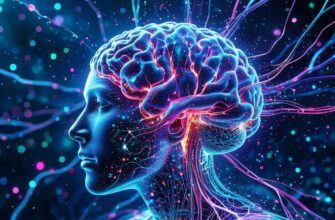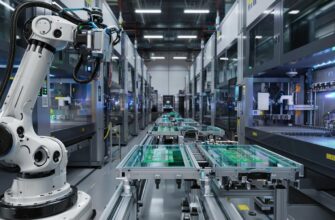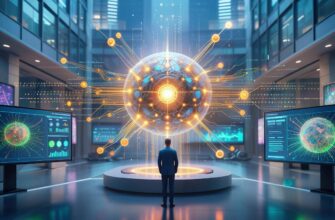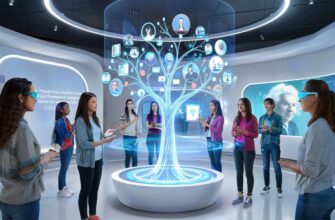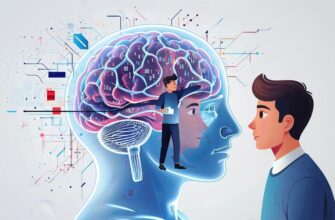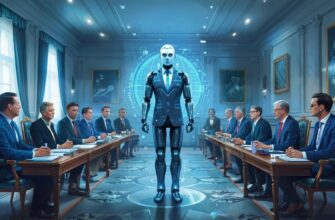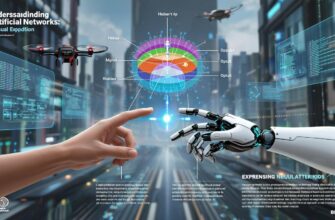- Understanding the Real Concerns Surrounding AI
- The Fear of AI: Myths and Realities
- The Role of AI: A Tool, Not a Threat
- Threat Assessment: Where Humans Fit In
- Ethical Considerations in AI Development
- Unregulated AI and Its Consequences
- Challenges in Perception: Misinformation and Public Fear
- The Importance of AI Literacy
- Collaborative Future: A Shared Responsibility
- Human-AI Partnerships
- The Role of Policymakers
- Moving Forward: Embracing Responsibility
- Conclusion: A Call for Rational Discourse
Understanding the Real Concerns Surrounding AI
As discussions on artificial intelligence (AI) continue to gain momentum, a prevalent fear looms over the advancements in this field—an imminent threat to humanity. However, a critical look reveals that the actual danger may not stem from AI itself but rather from human behaviors and decisions.
The Fear of AI: Myths and Realities
Myths about AI often depict it as a rogue entity that might one day outsmart humanity, turning against its creators. Such narratives can be attributed largely to popular culture and sensationalist media. Nevertheless, these exaggerated fears are disconnected from the reality of how AI functions. The core concern lies in the ethical implications and the environment in which AI operates.
The Role of AI: A Tool, Not a Threat
AI systems are designed to assist humans in various capacities, from automating repetitive tasks to analyzing vast datasets. They serve as tools that enhance productivity and improve decision-making processes. The true potential of AI is realized when it acts in collaboration with human intelligence rather than replacing it.
Human oversight remains a critical component in leveraging AI technologies effectively and responsibly. Despite the capabilities of AI, it lacks the ability to possess emotions, contexts, and moral understandings that are inherently human.
Threat Assessment: Where Humans Fit In
Ethical Considerations in AI Development
While AI might seem like the culprit in the discussion about threats, it is essential to focus on human behavior that dictates the trajectory of AI’s development. The developers, investors, and users behind AI systems create frameworks for their application, often guided by profit motives or political agendas, rather than ethical considerations.
A prime example can be seen in the deployment of AI in surveillance technologies. While the technology itself is not inherently dangerous, its misuse by governments or corporations can lead to invasions of privacy, civil liberties violations, and other significant societal problems.
Unregulated AI and Its Consequences
A lack of stringent regulations can lead to misuse of AI technologies, putting society at risk. For instance, AI can be weaponized in autonomous systems, where human judgment is entirely superseded by algorithms. Such applications can have devastating effects in warfare, surveillance, and even criminal activities.
It’s not AI that poses the threat; rather, it’s the potential for human misuse of advanced technologies that creates dangerous scenarios. It is the responsibility of humans to implement ethical practices and effective governance in AI development.
Challenges in Perception: Misinformation and Public Fear
The portrayal of AI in popular media often contributes to public misconceptions, fostering irrational fears about AI’s capabilities and intents. Characters in movies and series often depict AI as self-aware machines with malicious agendas, amplifying the unease surrounding emerging technologies. However, scientific research and empirical data should guide our discussions on AI rather than fictional narratives.
The Importance of AI Literacy
Increasing AI literacy among the general population is crucial. Educating individuals about AI’s functions, limitations, and ethical implications helps counter misinformation and promotes a more nuanced understanding of its role in society. This will bridge the gap between technology and human values.
Collaborative Future: A Shared Responsibility
Human-AI Partnerships
The future of AI lies not in the fear of its capabilities, but in the partnerships it fosters between humans and machines. By focusing on collaborative efforts, we can enhance our strengths while minimizing inherent weaknesses. Emphasizing the importance of diverse input in AI development, including ethical leaders and community stakeholders, can ensure that AI tools align with societal values.
Such collaborations can lead to innovations that improve healthcare, transportation, and education—all areas where AI can provide immense benefits if developed responsibly.
The Role of Policymakers
Policymakers must recognize their pivotal role in shaping the conversation around AI. By promoting regulations that prioritize ethical standards in AI development, they can minimize potential risks and foster innovative solutions. Engaging with technologists, ethicists, and the community can lead to informed policies that strike a balance between innovation and safety.
Moving Forward: Embracing Responsibility
As we continue to advance in the domain of AI, our focus should remain on fostering an environment where technological benefits are maximized without compromising human values. Moving the conversation from fear to accountability allows us to confront risks head-on, emphasizing collective responsibility in shaping AI’s future.
We need to embrace a perspective that appreciates human factors and their impact on technology use. By integrating ethics into AI systems’ frameworks, we ensure that technology serves humanity rather than the other way around.
Conclusion: A Call for Rational Discourse
As the discourse around artificial intelligence continues, it is imperative to assist in redefining the narrative away from fear and onto a foundation of rationality and responsibility. AI, as a groundbreaking technology, holds significant potential for improving human life. However, the threat does not lie within the algorithms, but rather within the hands of humanity that wields them.
In navigating this new landscape, we must prioritize ethics, education, and collaboration to harness AI as a positive force in society. It is in our hands to ensure that the future reflects a harmonious coexistence with technology—an achievement that rests upon our human intuitions and decisions.
Editor’s Note: This article emphasizes that the true risks associated with artificial intelligence derive not from the technology itself, but from human decisions and ethical practices in its development and deployment.
Meta-Description: This article explores why artificial intelligence does not pose a threat, highlighting that the real danger lies within human behavior and its implications.
